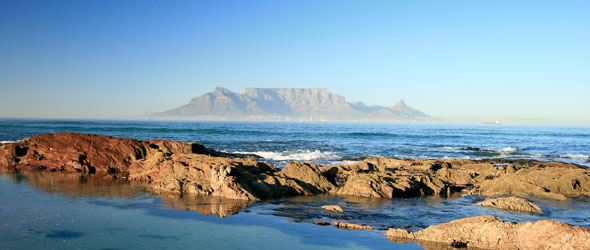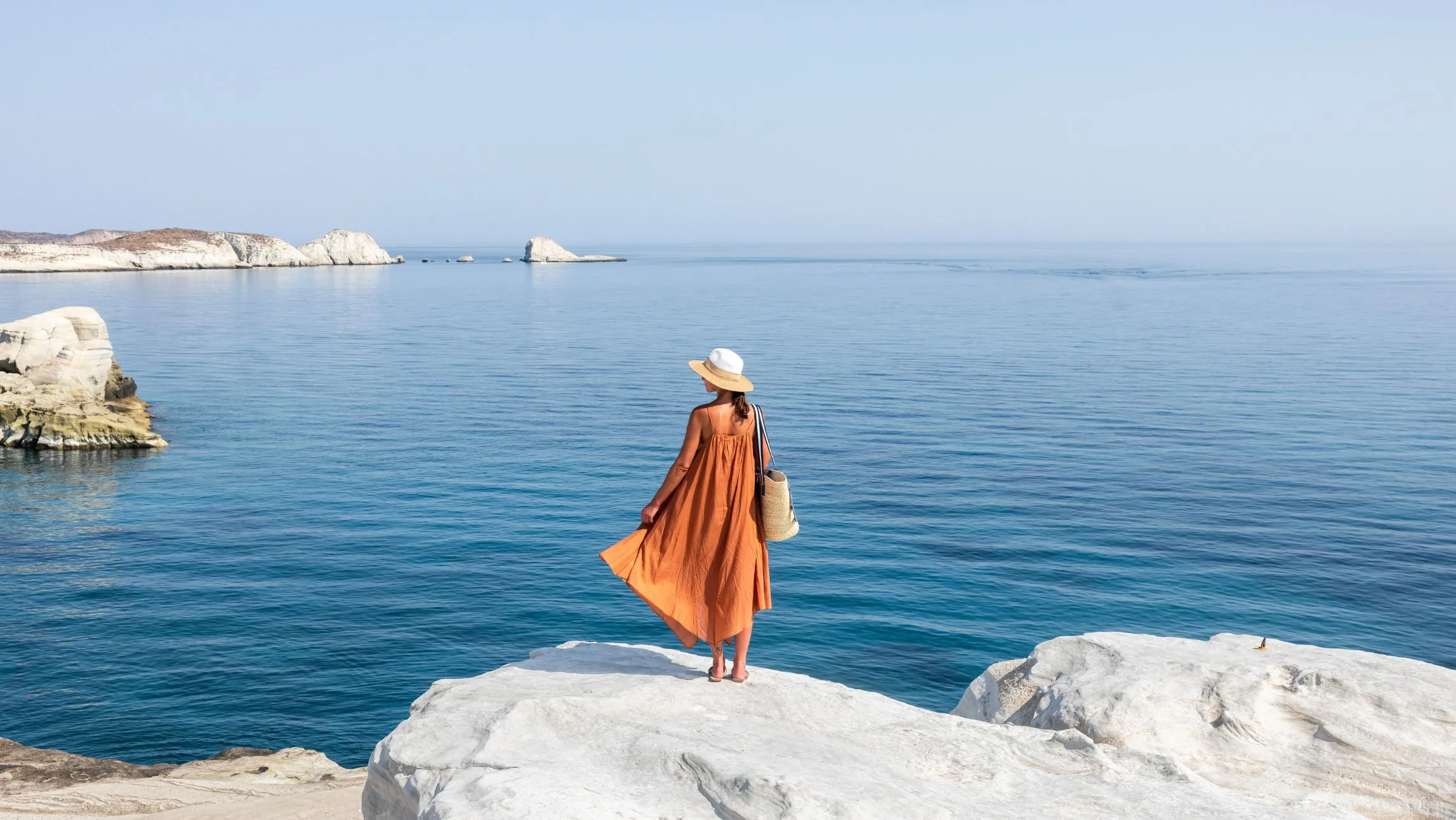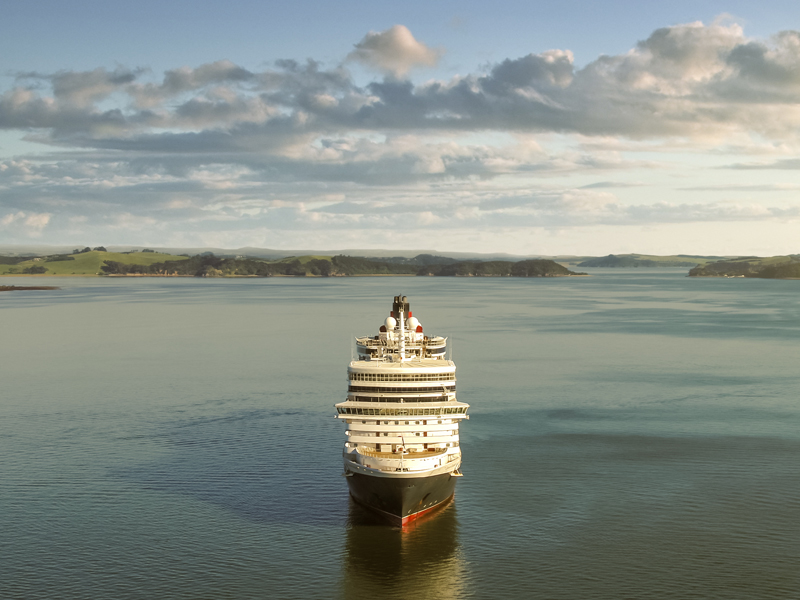We all know the big tourist attraction in ports such as Istanbul, Singapore and San Francisco – here, we talk to savvy expats and travel experts to find out what the locals love.
Cape Town
John Molinaro, general manager of Uniworld Boutique River Cruises, visited Cape Town recently to attend the Travel Corporation Global Conference.
“A five-minute ride aboard the Table Mountain [Aerial] Cableway offers breathtaking panoramic views over the city,” he says. “Or, if you have the time and energy, it is the perfect destination to explore on foot. To reach the Table Mountain summit, you will need to allow two to three hours. By hiking the mountain, you can explore beautiful Kirstenbosch National Botanical Garden.”
On a previous visit to South Africa, Molinaro took an excursion to Robben Island, which he has no hesitation in recommending. “Robben Island is a small island located off the west coast of Cape Town. So rich in history, this UNESCO World Heritage site was where political prisoners, including Nelson Mandela, were detained for many years.
“For those [pressed] for time, the Nelson Mandela Museum situated in the port is fantastic. A local guide, himself a political prisoner with Nelson Mandela, guided us around the venue, offering first-hand and detailed commentary.
“My most memorable and rewarding experience from the trip was working with the Amy Biehl Foundation to build ‘Wendy houses’ for disadvantaged families. Travellers are able to visit the township and learn about the fantastic work performed by the foundation’s many volunteers.”
Copenhagen
The Copenhagen district of Christianshavn is built on an artificial island. Christiania, a partially self-governing neighbourhood that has semi-legal status as an independent community, was founded when hippies occupied abandoned military barracks in the 1970s. This ‘city within the city’ is well worth visiting, says Jeremy Hearst, Sydney-based business head of Bentours, which has run tours and cruises to the Nordic countries since 1979.
Hearst, who visited Copenhagen recently, says that Christiania once had a reputation for drug sales but “that was all cleaned up five or six years ago – now it’s a really interesting commune with little markets and handmade crafts; it’s not threatening at all”. Tourist buses don’t enter but Christiania is easy enough to find.
Hearst recommends a trip to the baroque Church of Our Saviour, which has an extraordinary corkscrew spire. You can walk up the spire on the outside for grand views over central Copenhagen. Tour buses sometimes pass the church and point it out, Hearst says, but they don’t stop. You need to return – but only if you can walk up 400 steps!
A culinary delight Hearst recommends is Noma, judged The World’s Best Restaurant and The Best Restaurant in Europe in the 2010 S. Pellegrino World’s 50 Best Restaurant Awards. Noma is located in a converted warehouse by the waterside, also in the Christianshavn district.
The restaurant’s name stands for Nordisk Mad (Nordic Food) and, as you’d imagine, it serves only Scandinavian-sourced cuisine. That gives plenty of scope: expect everything from creamy oysters and locally caught lobster to smoked eels and musk ox. Danish chef René Redzepi scours Scandinavia to find fresh ingredients for his seasonal menu; be sure to book a table at least three months in advance.
Noma entered the elite Pellegrini Awards in slot number 33 in 2006 and has risen steadily since. Be sure to book at least three months before you want to dine.
Istanbul
Anne Edelston – who, with her husband, Captain Adil Bektas, runs Meridian Travels & Yachting in Marmaris, Turkey – recommends exploring Eminönü, a district in the heart of the walled city built by Constantine that’s now known as Istanbul.
“Stroll alongside the Bosphorus and take a simple meal of grilled fish, which has just been hand-caught by line while you watch. It’s served on fresh bread for just five Turkish lira [about $3] – you won’t find fresher or tastier fish,” says Edelston.
“It’s easy to miss this on an arranged walking tour of the city. You’ll find it alongside the Egyptian Spice Bazaar and the fruit-and-vegetable street bazaar where the Byzantines traded their fruit and veg centuries ago.”
Other suggestions from this well-established expat: “Hasan Pasa Firini (pronounced ‘asan pasha’) is a traditional baker in Besiktas, an area famous for football. All baking is still carried out on site.”
Bebek kahve is another Istanbul treat. Bebek (meaning baby) is an affluent Istanbul suburb and kahve means coffee. Richly aromatic Turkish coffee is served with
a small glass of water, sipped alongside the coffee.
“There’s a whole ritual to follow so the fortune-teller can read the grounds left in your cup,” says Edelston. “But none of this can come true unless you wash your own cup and saucer after the reading.”
For Istanbul dining, Edelston recommends Refik Meyhane, Beyoglu. “Named after the founder, Refik Arslan, this restaurant has a reputation for serving only the best fish the Black Sea can produce. Try hamsi (anchovies), lightly battered and fried served with a simple green
salad and fresh bread.”
Singapore
Singapore is just buzzing with behind-the-scenes fascinations. Sandra Leong, area director Oceania for the Singapore Tourism Board, suggests a few.
The Dempsey Hill and Tanglin Village district, she says, which used to be an old army barracks, “is now a bustling lifestyle quarter with restaurants, cafés, art galleries, antique furniture shops and spas. Or head to the Arab Quarter and Haji Lane, where you’ll find fabrics, Indian saris, Middle Eastern food, local designer boutique stalls and popular local hangouts like the Blu Jaz Café.”
Another attraction is HortPark. “If you’ve been to Singapore’s Botanic Gardens already, check out the new HortPark at Pasir Panjang,” Leong suggests. The 23-hectare park, which officially opened in 2008, is a mecca for gardeners seeking design inspiration as it features 23 themed gardens, among other horticultural attractions.
Other drawcards include Katong/Joo Chiat, for award-winning local eateries, and Katong Antique House, which showcases Singapore’s unique Peranakan (Malay and Chinese) culture. And don’t forget Ann Siang Hill and Club Street for local design stores, spa retreats, quaint restaurants and small patisseries.
For dining with a difference, try The White Rabbit at Dempsey Hill (an old church re-created with an Alice in Wonderland theme), Iggy’s (voted one of the world’s Top 50 restaurants by San Pellegrino), Jaan par André (ditto) and Waku Ghin (chef Tetsuya Wakuda’s only restaurant outside Sydney).
Incidentally, Singapore’s new International Cruise Terminal at Marina South, due to open early next year,
will be able to berth the largest cruise ship in the world, Allure of the Seas (see New Ships review, p25).
Southampton
Southampton is one of England’s great port cities. Look at the stern of a Cunard Line ship and it will say Southampton below the ship’s name. A trip on the Hythe Ferry can give excellent views of the Queen Mary 2 and Victoria when they’re in their Southampton home berths, as the ferry sails right past them.
Booklets at Southampton’s Tourist Information Centre explain how to explore the city at your own pace. The Titanic Trail booklet guides you round memorials and buildings associated with the Titanic story, while the Southampton Mini Guide allows you to take in attractions ranging from historic Bargate to the modern WestQuay shopping mall.
Southampton City Council communications officers point out that Southampton has a thriving art scene. They suggest visitors explore the City Art Gallery, which houses a permanent collection of more than 3,500 works that span some six centuries.
If you have a few days to spare, there are some quintessentially English spots within easy driving distance of Southampton. The New Forest, about 24 kilometres to the west, is a national park of open heath, ancient woodlands and wonderfully traditional attractions such as Exbury Gardens and the Steam Railway. Winchester, about 24 kilometres to the north, is a city steeped in history – it boasts Europe’s longest medieval cathedral – and is surrounded by the glorious rolling Hampshire countryside.
Another option: take a Red Funnel ferry or the speedy Red Jet to the Isle of Wight for a day visit. The isle is a gem and the row of thatched houses in Winkle Street, Calbourne (pictured above) is so endearingly cute, you almost expect Rupert Bear to emerge and offer you tea and scones.
Vancouver
North Vancouver’s famed Capilano Suspension Bridge has a lesser-known cousin, the Lynn Canyon suspension bridge in Vancouver’s tranquil Lynn Canyon Park (below). The Lynn Canyon alternative is much loved by locals and well worth a visit.
Long-term Vancouver resident Pam Searle also recommends the George C. Reifel Migratory Bird Sanctuary in the Fraser River estuary, a leisurely one hour’s drive east
of downtown Vancouver. This sanctuary is one of Canada’s top bird-watching sites and the winter home of the Lesser Snow Goose.
Book-lovers seeking extra shipboard reading should gravitate towards Vancouver’s amazing McLeod’s Books, a second-hand bookstore with a difference. It’s at 455 Pender Street West and its vast and eclectic selection makes it a bookshop where you’re sure to find something that excites you.
For some fun, Searle suggests catching a show choir performance. A show choir is a group of people who combine choral singing with dance movements, sometimes within the context of a specific idea or story. Hit television series Glee has helped popularise them. Vancouver is home to two excellent show choirs: Sing City and Fat Chants. It’s worth picking up a copy of Time Out Vancouver to see if they are performing during your visit.
Hong Kong
Hong Kong is a knockout city, as bustling today as it was under British rule. Margot Higgins, a public relations specialist and communicator from Sydney, has lived in Hong Kong for several months and will be there for another year or two. Hong Kong [Museum of] History
is “one of the most interesting museums I have ever visited”, she says.
“As for restaurants – this city is food central so it’s hard to pick a favourite, but three stand out: Lot 10 off Gough Street for fabulous French food; Din Tai Fung in Causeway Bay for the tastiest dumplings in the universe; and The Press Room for the best Bloody Mary, plus wonderful steaks, a great wine list, and rubbing shoulders with journos from the South China Morning Post.”
Higgins also recommends Soho Corner for mojitos, Aussie ’80s rock and people-watching.
“The Phoenix, next to the escalators near Mosque Street, is a quaint little pub with happy hour from four to seven in the evening,” she says. Her other recommendations: “Hong Kong trams – cramped and always crowded but quintessentially HK, and just $2 per trip.
“The bus ride to Kennedy Town, a route that weaves
its way from Causeway Bay down Queen’s Road, is great for sightseeing, especially onwards from Central,” says Higgins. “Make sure you sit up the front on the upper deck and switch on your camcorder as the bus winds past open markets, shops for the dead, tinkers and tailors plying their trade on the footpath, shops selling Chinese medicines, old wares, snake blood and more.”
Buenos Aires
Big, stylish Buenos Aires reminds some visitors of Paris, others of Madrid. For an authentic experience of this famously vibrant city, head for the Feria de Antiguedades de San Telmo – the San Telmo Antique Fair.
“Every Sunday, the streets of San Telmo are buzzing with locals shopping around for quality antiques and goods,” says Dillon Bohler of Chimu Adventures. “You can find everything from rugs to teapots to silverware and necklaces to fresh juices.”
Chimu Adventures, which has offices in Sydney and on Queensland’s Sunshine Coast, specialises in South American travel and employs only staff who have lived or travelled extensively on that continent.
Another special place Bohler suggests is Palacio Barolo, a grand neo-Gothic, neo-Romantic building with a design based on Dante’s Inferno. It’s among the most impressive structures on the city’s Avenida de Mayo, yet it is often missed on city tours. Opened in 1923, Palacio Barolo was the work of eccentric Italian architect Mario Palanti, who incorporated dragons and secret Masonic symbols in his wildly eclectic design. The quirky building affords panoramic city views and you can tour it every hour from 2pm to 7pm on Mondays and Thursdays for a modest fee.
Or you could learn to cook – or take a tour of the city’s culinary hot spots – with Teresita Bella. An expert Argentine chef, Teresita conducts an empanada-cooking class and
one-day food tours in the suburb of Adrogue. You need to leave by 9.30am to arrive in time but you can get there by taxi, bus or train (www.cookingwithteresita.com).
Rio de Janeiro
Rio de Janeiro is best known for its stunning beaches, its annual carnival – one of the biggest in the world – and for the giant statue of Christ the Redeemer standing atop Corcovado Mountain. A lesser-known attraction that has much appeal is the so-called ‘Hippie Fair’.
“While its official name is Feira de Artesanato de Ipanema, which means Ipanema Handcraft & Art Fair, locals still refer to it by its more colloquial name: the Hippie Fair,” reports Dillon Bohler of South American specialist travel company Chimu Adventures.
The fair has been a Rio institution since the 1970s, with vendors gathering every Sunday to sell traditional Brazilian food, handmade art, Brazilian musical instruments and many other souvenirs.
“It’s the perfect place to find a souvenir or to simply walk around on a casual Sunday afternoon, as it’s located near the famous Ipanema Beach,” Bohler says.
Another option is a favela tour, favelas being Rio’s hillside shantytowns.
“While it may be slightly controversial, a favela tour in Rio really gives you a fascinating insight into the workings of these communities,” Bohler declares.
“It is a little-known fact that favelas are actually very safe during the day, as it is forbidden by the community leaders to commit crime in a favela.
“Another interesting insight is that a lot of the favelas are built up on the hills, meaning they have multi-million-dollar views and are right next to mansions owned by the rich and famous.”
San Francisco
Visiting Alcatraz Island and Fisherman’s Wharf, taking a cable-car ride and shopping in Union Square rank highly among San Francisco’s ‘must-do’ attractions.
“But there are plenty of lesser-known activities that could keep visitors busy for weeks,” comments Alison Scott of the San Francisco Travel Association.
Scott says that one of her favourite ways to spend a morning in the city is to visit the Ferry Plaza Farmers Markets, held every Tuesday, Thursday and Saturday at the beautiful Ferry Building on the Embarcadero.
“I’ll buy a coffee from an organic coffee stall and then stroll around to look at the fruit, vegetables, cheese, breads and flowers, and talk to the farmers, who are from around the region. Many San Francisco chefs buy their produce from these markets. ”
San Francisco’s Chinatown precinct is said to be the largest Chinatown outside China. Try to find the best of countless dim sum restaurants. Or take a walking tour that takes you to a herbal pharmacy, a fortune-cookie factory,
a Buddhist temple and a traditional tea ceremony.
The Haight-Ashbury neighbourhood, birthplace of the hippies, is worth visiting “even if you don’t remember the flower-power ’60s”, Scott says. “It’s easy to lose an afternoon meandering through the eclectic shops there. You’ll find everything from exclusive boutiques to vintage-clothing stores, bookshops and the odd Eastern-influenced smoke shop. If you eat at one of the hip cafés, try to get a seat near the front so you can watch the people go past – you’ll see everything from tie-dye-wearing locals to neo-punks.








